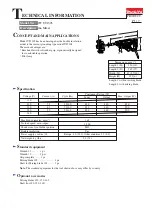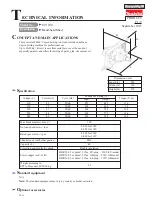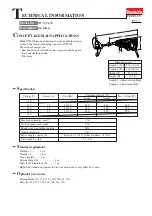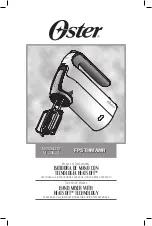
12
5.4 Auditioning a signal and setting up a channel
1) Turn up channel volume to unity gain (
to 0). All other channel volume controls should be set fully
counter-clockwise (minus infinity).
2) Generate a signal, i.e. a voice through a microphone. There should now be some activity at the bargraph
meters
.
3) For Mic Channels: Adjust the Gain control
until transient peaks are regularly h6 dB. Continuous
signals should not exceed 0 dB.
4) For Stereo Channels and other stereo line inputs, use the output volume of the source instrument or FX unit
to effect gain adjustment until transient peaks are regularly h6 dB. Continuous signals should not
exceed 0 dB.
5) Altering EQ will affect a channel's gain. If EQ is adjusted at any time, repeat steps 2 and 3 or 4.
6) Turn the channel's volume control fully counter-clockwise. Move onto next channel and repeat steps
1 thru 6.
7) Once all channel inputs have been set for level, turn all active channel level controls back to 0 dB. You are
now ready to start mixing.
5.5 Recording levels
When recording to digital, it's a good idea to keep the recorder's peak meters below 0 dB. Most (not all, esp.
samplers) read 0 dB with some headroom left. This is because, unlike with analog, the onset of digital distor-
tion is as sudden as it is horrible. If you really want to take your recording level to the limit (and fully exploit 16-
bit digital's 96 dB dynamic range for example), you'll have to do some calibrating. How to do it? Well, you could
run a tone at 0 dB from the mixer and use that as your DAT or ADAT reference. But your DAT or ADAT may be
way under its maximum input limit. Probably a better way to work out just how hard you can drive your recorder
is to incrementally increase the record level until the onset of digital distortion, subtract, say, 5 or 10 dB, and
never exceed that level. Engage peak hold on your recorder before recording if you want to confirm that you
haven't. Peak meters read more-or-less independent of frequency. Aim for 0 dB recording level for all signals.
5.6 Modification
The following modifications require you to do some soldering. Attempt only if you are experienced in using an
iron on PCBs. Otherwise, refer to qualified personnel. After modification the BEHRINGER warranty becomes
discretionary.
Links should not be threaded into holes on the PCB. They should be soldered to the tinned areas around the
holes, and bowed slightly upwards in between.
Mono Channel Aux Send 2 > pre-fader
All mono channel Aux Sends 2 are post-fader. If you want to convert them, carry out the modification described
below to each mono channel you want to be altered. The right PCB area is indicated by a yellow printing (see
figures below).
1)
Switch desk off and disconnect it from the mains supply!
2)
Cut the post track.
3)
Add in a pre link.
Repeat for all mono channels you want to be modified.
6. CONNECTIONS




































